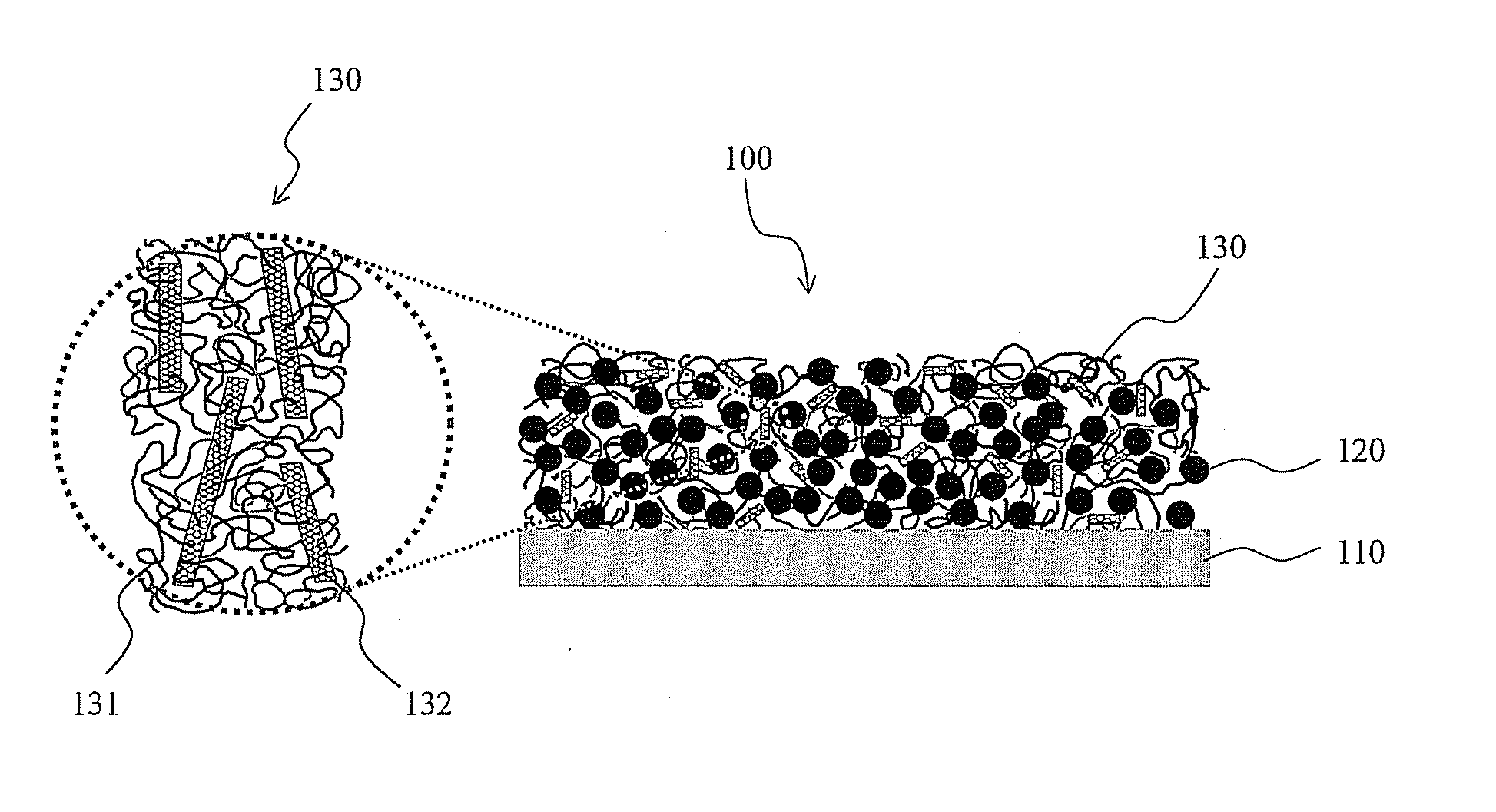Composite binder containing carbon nanotube and lithium secondary battery employing the same
- Summary
- Abstract
- Description
- Claims
- Application Information
AI Technical Summary
Benefits of technology
Problems solved by technology
Method used
Image
Examples
example 1
[0060] Predetermined amounts of multi-walled carbon nanotubes (MWNTs) were pre-treated using a UV ozone generator. In order to achieve uniform UV-contact effects during UV ozone treatment, after being irradiated with UV light for 20 min, the carbon nanotube sample was re-dispersed using a spatula. By repeating this procedure, the carbon nanotubes were subjected to UV ozone treatment for 180 min, and the treated carbon nanotubes were then dispersed in dimethyl sulfoxide.
[0061] On the other hand, 5% by weight of a polyvinyl alcohol having a degree of polymerization (DP) of 4000 and a degree of saponification (DS) of more than 99% was dissolved in dimethyl sulfoxide. The resulting solution was mixed with the above MWNTs-containing solution such that MWNTs were homogeneously dispersed in the polyvinyl alcohol. Herein, MWNTs were used in an amount of 1% by weight, based on the weight of the polyvinyl alcohol. The resulting mixed solution was coated to a thickness of 500 μm on copper foi...
example 2
[0062] A polymer film was fabricated in the same manner as in Example 1, except that multi-walled carbon nanotubes (MWNTs) were added in an amount of 5% by weight, based on the weight of the polyvinyl alcohol.
example 3
[0064] 85 g of a silicon-graphite composite active material, 13 g of a composite binder containing the multi-walled carbon nanotubes (MWNTs) of Example 1 in an amount of 1% by weight, based on the weight of a polyvinyl alcohol having a degree of polymerization (DP) of 4000 and a degree of saponification (DS) of more than 99%, and 2 g of carbon black as a conductive material were mixed in dimethyl sulfoxide as a solvent, and the total content of solids was adjusted to 30% by weight, thereby preparing a slurry. The resulting slurry was coated to a thickness of 100 μm on copper foil using a doctor blade, and was dried in a drying oven at 130° C. for 30 min, followed by rolling it to an appropriate thickness to thereby fabricate an anode.
PUM
 Login to View More
Login to View More Abstract
Description
Claims
Application Information
 Login to View More
Login to View More - R&D
- Intellectual Property
- Life Sciences
- Materials
- Tech Scout
- Unparalleled Data Quality
- Higher Quality Content
- 60% Fewer Hallucinations
Browse by: Latest US Patents, China's latest patents, Technical Efficacy Thesaurus, Application Domain, Technology Topic, Popular Technical Reports.
© 2025 PatSnap. All rights reserved.Legal|Privacy policy|Modern Slavery Act Transparency Statement|Sitemap|About US| Contact US: help@patsnap.com


